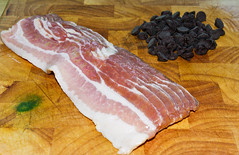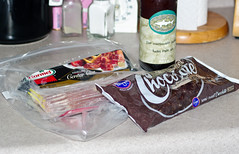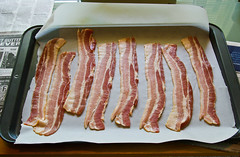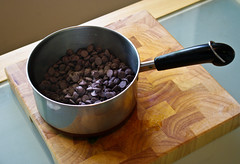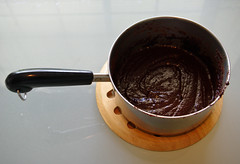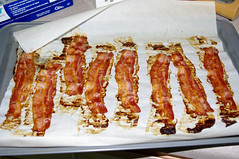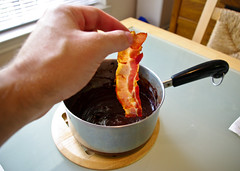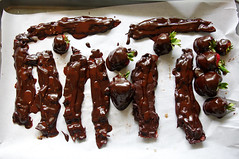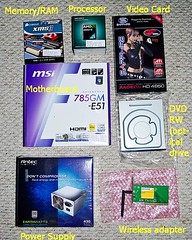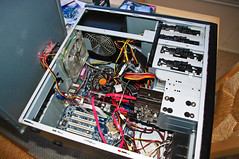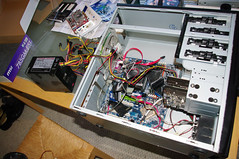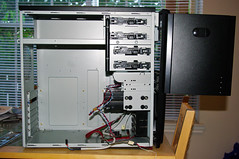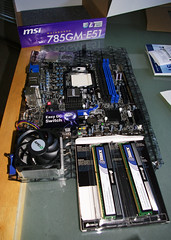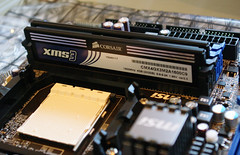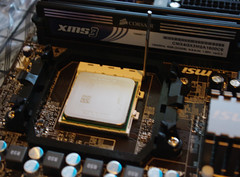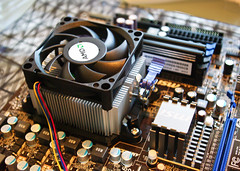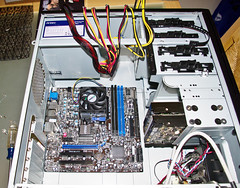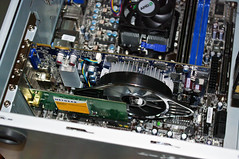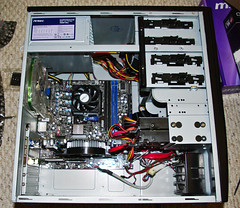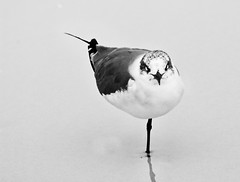
(Laughing Gull in Repose, Sarasota, Florida)
As much as I'm fairly sure that my last post is the greatest elevation to which this blog will ever climb, time goes on, and so must we with it (certain heavy-breathing island castaways notwithstanding.)

(Least Grebe, Brazos Bend State Park, TX)
As I've discussed in previous posts, I'm not really a birder, I just play one on everywhere-but-TV. As a naturalist, I'm pretty excited by seeing new (to me) species. It's interesting to categorize and “collect” them, I guess, but what really fascinates me is seeing something new, or seeing a new side of a species I'm familiar with. (Rather than make you sit through all this blathering text to get to the pics, I'm going to randomly insert them as we go.) That sense of interaction really touches on a younger me, when everything was fascinating because everything was new and novel [1].

(Ruffed Grouse, Killarney PP, Ontario)
I volunteer at a local state park in a naturalist capacity (complete with uniform and dorky hat). It's been a great chance to learn form some folks who have decades of knowledge they're very willing to share. About a year and a half ago, I decided I didn't know birds as well as I should. Apparently, this is nigh unto a sacrilege in the birding community as we are in what may as well be the Mecca of birding. The Texas Gulf Coast is where people fly to to bird. It's where they hold Birding classics.[2] We're ground zero for birds stopping to rest after shooting over the Gulf from the Yucatan, etc. on their yearly migration. So, I suppose it's fitting I learn to bird here.[3]
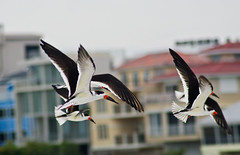
(Black Skimmers in flight, Sarasota, Florida)
And birds are easy to get into because, while it often seems you can never get a good look/photo of them to save your life, they're EVERYWHERE. If I'm lucky, I'll see a couple different mammals on a hike. Maybe a reptile or amphibian or two. Lots of insects if I look closely enough, but they don't always make themselves readily known.[4] Birds, on the other hand, are everywhere. And there are a LOT of them, in terms of type and number. So it's not to hard to be continually interested as a birder, because there's always a decent chance you'll see something new every time out, at least for several years.
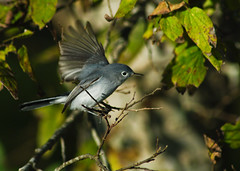
(Blue-grey Gnatcatcher, Brazos Bend State Park)
After a year and a half of some great hikes and coast trips, I think I've gotten a pretty good handle on the local birds. I'm starting to even recognize some calls. However, I still don't think of myself as a birder, per se. Mostly I think it's matter of focus. Birders may look a bit the odd ducks, walking around in their khakis, guide books in pouches, $2000 swarovski binoculars and spotting scopes, and camera lenses the size of my thigh. But they have a pretty intense focus. They know their birds, and they have a love for them that's fairly impressive in the drive it imparts in them. I don't really have that same sort of drive. It's not that I'm lazy, it's just that I'm endlessly fascinated with all forms of life. I remember leading a group of birders on a hike, and missing some bird they were swooning over because I was equally fascinated with a species of cotton rat I had never seen before.
So as far as me being a birder, I'm too much of a generalist to be a birder. Birders are specialists. I'm content to just be amazed about the natural world in general.[5]
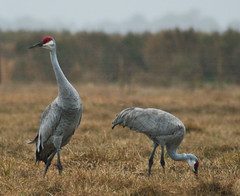
(Sandhill Cranes, near Sarasota, Florida)
That being said, I also have the unfortunate “collecting” urge the plagues us all now and again. One of the common practices among birders is to keep a life list....a list, simply, of all the birds one has seen (heard, etc). Being an avid photographer, I thought a list on a piece of paper was not halfway as interesting as a collection of images. Over the last year and a half, since I started counting, I have recorded over 200 species of birds, and amassed a gallery of pictures of most of them.

(Palm Warbler, Florida)
I'm oddly proud of that gallery, because of the challenge it represented to me. Bird photography is not an activity for the weak of patience or pocketbook. To get those beautiful images one sees in catalogs and such requires endless patience and lenses costing roughly the GDP of Guam. In a good Guam-ian year. A good telephoto lens of acceptable magnification can easily run into the 5 digits in cost. My current setup is akin to a 98 pound weakling begging for a sand shower, and yet it still cost more than my first car.[6] So many of my pictures are blurry, many are poor quality. One in ten, maybe, is a beautiful shot, and that's probably being generous. Please keep this in mind as you peruse. These are not art shots, they are the souls of a place and a moment frozen in a quicksilver blast of 1's and 0's to hold on to a piece of wonder.
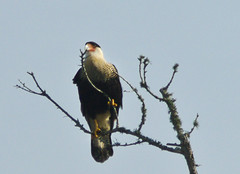
(Crested Caracara, San Bernard NWR)
One thing I have noticed is that it wasn't until I started learning my birds (and other groups more seriously) that my “natural awareness: started to really shift in everyday life. I suppose it's like that for everyone who specializes in a given thing. Sadly, I also do this for water and wastewater infrastructure and stream characteristics. The world is awash in sensory input, so we selectively shut out or generalize somethings about our surroundings and focus on others. It takes a lot to break your threshhold when you haven't been trained to spot something. Now I notice myself noticing. Where I wouldn't have even paid much attention to birds, .my mind now automatically supplies me with a name/etc. It's not just a bird hopping on the ground, I am acutely aware that it's a great-tailed grackle.[7]
Sometimes I wonder how I didn't see these things before. And, more importantly, I wonder what I'm not seeing yet. That more than anything is the driver of my life, in both the general and specific.

(Willet, Houston, TX)
(These images are from my life list gallery, and represent new species for me this year. This was a great birding year. Not so much for photography of birds:) I do promise to devote equal time to insects, herps and mammals here in the near future. )

(Black-Throated Green Warbler, Quintana, TX)
1 - I like that feeling. I think we build up a lot of filters and scar tissue as adults. Some of it is necessary, some of it keeps us from being tuned into that sense of wonder that really is one of the better things in life.
2 - A birding classic is a competitive bird watching. On a very large scale. Yep, there's really not much hyperbole I can add to that mental image.
3 - I think of this somewhat akin to learning to walk in the Boston Marathon.
4 - I've noticed among the older/more advanced naturalists I work with that birding seemed to have been a “gateway drug” that inevitably leads to more “hard drugs” like insects, etc. I think the normal progression is birds to butterflies to dragon flies to insects. Mammals usually get the short shrift, and the Herpetologists are kinda in a world, cool as it is, of their own. But birding is really the gateway to “harder” classes/families genii.
5 - Not to suggest the birders I know are not equally versed in other species. They just have selected a major, while I'm still blissfully undeclared.
6 - Though, to be honest, that's not saying much when you first car was an ill-advised 82 Ford Thunderbird. And no, I didn't mean Firebird, I meant Thunderbird. I would say my current setup is also more expensive than my first two cars combined, but again, my second car was an 81 camaro of dubious heritage. So, grain of salt for you.
7 - To be honest, sometimes it's almost as if I wish I could go back to not knowing as much about certain aspects of nature. I often worry that in delving so deeply into the details, one can lose the glory of the picture as a whole. The thought sprung into my head the other day as I was out for a walk. I wasn't looking with a wide angle lens at the scene in front of me, my eyes were unconsciously darting back and forth, zoomed in on the detail...noting the northern mockingbird in the tree, the leucage venusta spider in its web, the vervain blowing in the breeze. While it's nice to be aware of all of these things on a more minute level, it's also worrisome that I'm missing the ability to look at the whole picture...the 30,000 foot view.

